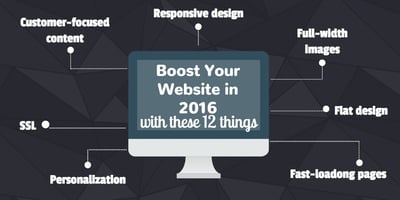
User experience is one of the most important parts on any company’s website.
Without it, your website is a clanging cymbal with some cool graphics. Effective UX aligns the goals of the users with the goals of the business. One way to start with UX is to evaluate the usability of your website.
The trick here is to go one step at a time.

As users move throughout your website, be sure to:
- Meet one goal at a time
- Request one action at a time
- Help them move through the buyer’s journey one stage at a time.
Don’t clutter your site with multiple actions and offers. Instead, use content that helps the user take one step, then the next.
If you try to offer too much or ask too much of the user, they could become confused and overwhelmed. Rushing visitors to the final stage of the buyer’s journey may only lead them to leave your site.
Chances are you won’t ever have only first-time visitors or only customers on your site. At any given time, you could have users in each stage of the buyer’s journey on your website all at the same time! How do you create a website that caters to every user at every step in the buyer’s journey?
The answer is smart content.
Smart content promotes a good user experience by offering valuable content to each stage of the buyer’s journey.
Smart content makes better UX possible for all your website users.
You can use smart content (also called personalization) on site pages, landing pages, email, even CTAs.

Smart content uses information from visitors (such as an IP address or list membership) to choose what content to show each visitor. If a user doesn’t meet the set criteria for smart content rule, the user will see the default content you set.
It is important to optimize your default content for first-time visitors and search engines. Search engines will crawl the default content only.
With smart content, you have the power to transform your website and the user experience. You don’t have to pick and choose one question or offer. Instead, you can offer high-quality content for all visitors to meet their specific needs. Basically, smart content is like having your UX cake and eating it too.
How to Use Smart Content to Meet Your Users’ Needs

In HubSpot, you can set up smart content in several ways, but it boils down to four main categories:
1. Lifecycle Stage
Show content according to where someone is in the buyer’s journey.
Smart content can optimize content for blog subscribers, Sales Qualified Leads, even current customers. You will create default content set for a visitor coming to your website for the first time.
When users see information that’s valuable to them, they have a good experience on your site.
2. Buyer Persona
Not every persona is the same.
Each buyer persona consumes information differently and has different pain points to address. Smart content set up for buyer personas allows you to offer each persona the most valuable information. And you won't overwhelm anyone with information that’s not beneficial to their persona.
Pro tip: set up your highest-value persona as your default content.
3. Visitor
Set up smart content based on several facts about your site visitors.
You can create content based on IP address to target visitors by geography. For example, choose the language on your site, or determine which events you feature.

Use smart content to customize site pages and content based on the device the visitor is using on your site. For example, if the user is on a desktop computer, you may tell them to download an offer. But if a user is on a mobile phone, ask if they want the link emailed to them. That way, they can access it later when they’re back at their desk.
Another important feature of smart content is referral source. Customize content for visitors who come from organic search, paid search, social media, specific urls, and more. This helps keep content consistent and familiar throughout their interaction with your brand. And familiarity is something people love.
4. Activities
While considered to be “advanced smart content” for some, this is my personal favorite type of smart content.
Smart content by Activity means you examine the past behavior of users on your site to determine the segments you create.
Let’s say you offer a certain ebook at the end of a blog post. It’s an offer developed for someone in the Awareness stage. Maybe a user has already downloaded this particular ebook and is ready to move to the next stage in the buyer’s journey. By segmenting by list membership, you can be sure that visitor doesn’t see an offer he already has. Instead, he will see a new offer—a resource that will help him get to the next step.
You can also use smart forms to gain more information about your leads. When you use smart content in forms, you can determine which fields should be replaced once a visitor has already completed that form field once. That way, you can always ask new questions to continue nurturing leads every time they return to your site—or make it easy for your customers to download new offers.

Smart content allows marketers to make the most of their website. By offering users the most valuable content, you improve user experience—and meet the needs of your users.
If you want to improve the user experience of your website to grow your business, get the free ebook: Intro to Growth-Driven Design.






